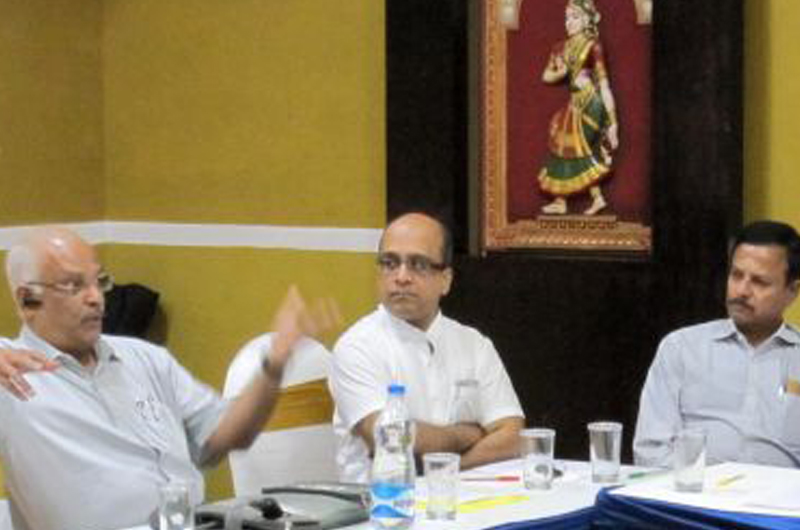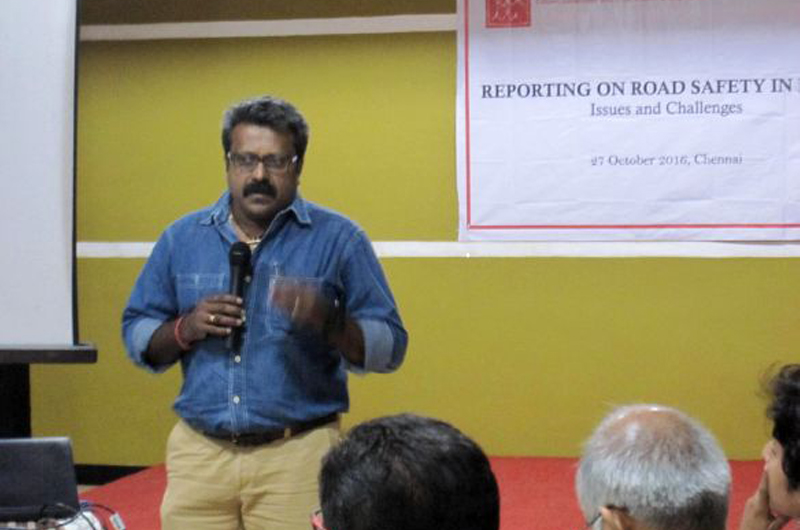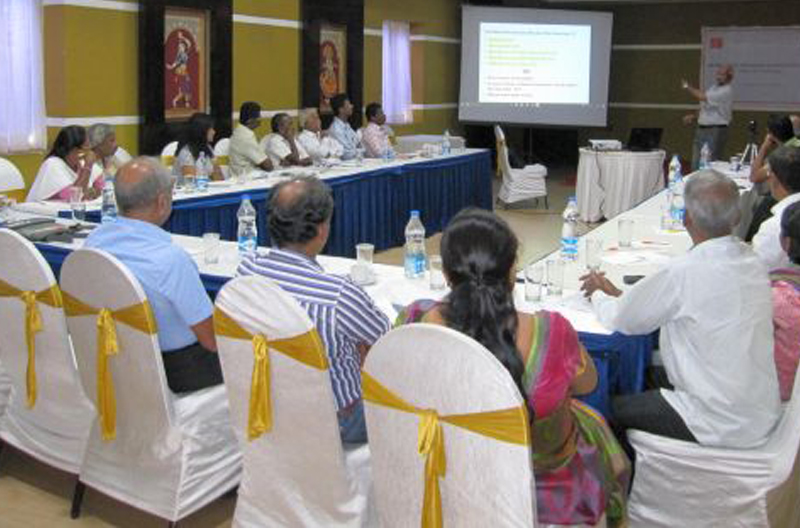India accounts for 10 per cent of the 1.25 million fatalities that occur worldwide every year, according to a WHO Report. Figures trotted out by Indian Government agencies say there were 146133 fatal road accidents in India in 2014, with injuries affecting 500279 people. Fifty-four per cent of the victims were in the 15-34-year age group, some of the most productive years. And speeding was cited to be a major reason for road accidents.
These were some of stark facts that came to light at a seminar titled, Reporting on Road Safety: Issues and Challenges, conducted by the Citizen Consumer and Civic Action Group (CAG) and the Press Institute of India (PII) on October 27 at Hotel Raj Palace Sundar in Chennai. The figures were from Nalin Sinha’s (consultant, Global Road Safety Partnership, New Delhi) presentation, conveyed on his behalf (since he wasn’t present) by Sumana Narayanan, CAG.

Talking about what he called “anti-social” (drink- and drug-influenced) and “dangerous” (reckless) driving, Dr Prashant Kekre, consultant spine surgeon, Chennai, referred to the “terrible human cost” and “economic burden” arising out of road accidents and stressed the need for more public participation to create awareness. “Reporting drunken driving is the moral responsibility of everybody,” he said. He was also for the blood alcohol content being measured as a mandatory procedure.
Presenting her analysis of media coverage of issues relating to road safety, Sumana Narayanan said reports on accidents, government policies, articles on car safety features, and infrastructure appeared from time to time on the various pages of newspapers. She felt that coverage of policy issues, pedestrian problems and road-safety campaigns were fairly good. However, there were quite a few areas that the media could devote greater coverage to: issuing driving licenses, scientific investigation into accidents, causes of road accidents, road rules and international standards. There was the need to link some of the issues and look at them holistically and also how India compared with other countries in such aspects, she added.

Dwelling on the challenges in reporting road accidents and whether the media was sensitive enough, Arun Ram, resident editor, The Times of India, Chennai, said that one of the primary challenges for editors was making the story readable, especially since many of the road accident stories were about numbers. “As a society we are spending more time on the roads,” he said, pointing to 40 deaths resulting from road accidents every day in Tamil Nadu, on average. Another challenge was to “humanise a tragedy, bring in more people, show how families coping – bring in the human interest angle”.
Ram admitted that there was the problem of reporters being flippant sometimes, of sources being unreliable, police reports being rather casual, and government officials refusing to speak. “This leads to inaccuracies. It is not good for journalism or for society,” he said.

Gitakrishnan Ramadurai, associate professor, Transportation Engineering Division, Indian Institute of Technology-Madras, speaking about road infrastructure and its contribution to road safety, provided the French example of how the government there had dealt with drunken driving as way back as 1978, with even the French President speaking about the consequences. Seat belts were made mandatory in cars. Such initiatives helped bring down the number of accidents drastically, he said.
Education, enforcement and emergency care had to go hand in hand, Ramadurai stressed. His presentation showed that accidents usually happened at junctions, calling for better channelisation at intersections. He said accidents tended to occur during change of signals or traffic lights in cities like Chennai as motorists hurried to slip through.
Sashi Nair, director-editor, PII, welcomed the gathering, and moderated the proceedings.



 from Webdoux
from Webdoux